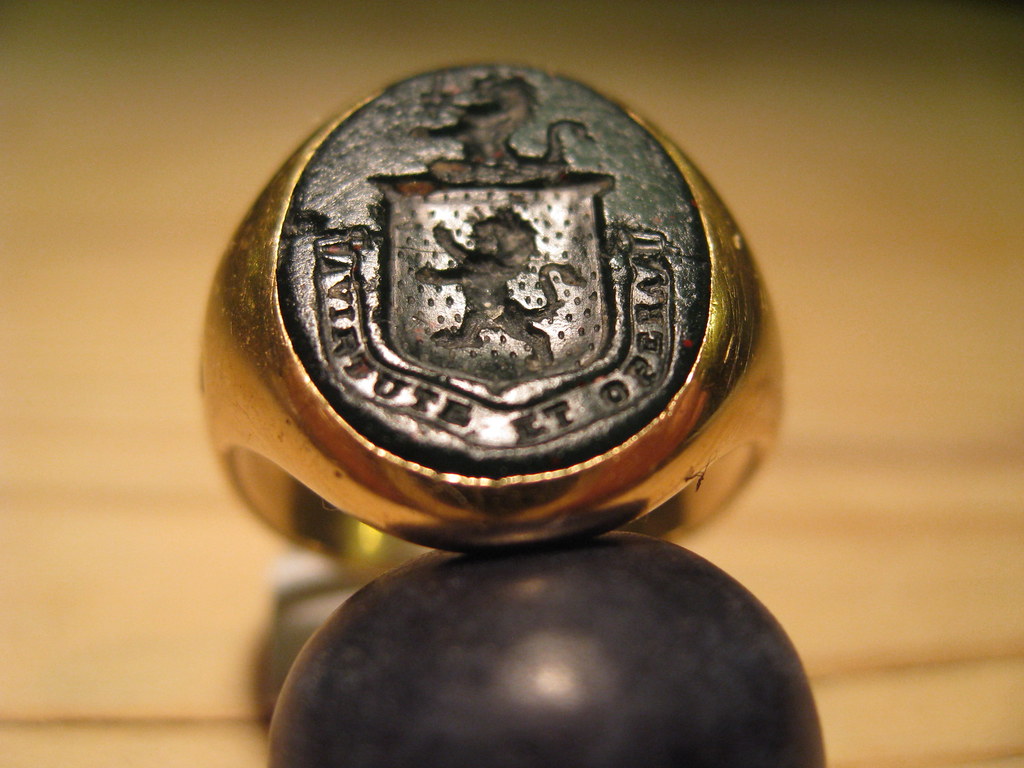
Ever wonder how a simple circle of metal or stone could hold the weight of entire dynasties, seal crucial deals, or even whisper tales of ancient power? Rings, those seemingly unassuming adornments we wear on our fingers, have done all that and more throughout human history. They’re not just pretty baubles; they’re historical documents, symbols of immense authority, and often, silent witnesses to pivotal moments that shaped civilizations.
From mythical origins shrouded in legend to the glittering displays of status in ancient empires, these circular treasures have consistently represented far more than their material worth. They’ve been tokens of devotion, loyalty, eternity, and even divinity, carrying narratives that resonate deeply with anyone who appreciates a good story — especially when that story involves kings, gods, and inescapable destinies.
So, let’s take a deep dive into the captivating world of these storied bands. We’re unearthing the fascinating beginnings of ring symbolism, exploring how these early, powerful pieces laid the groundwork for the royal rings we know today. Get ready to discover the first six of these incredible artifacts, each a testament to the enduring power and mystique of the ring, forging connections and signifying power long before crowns were even a thing.
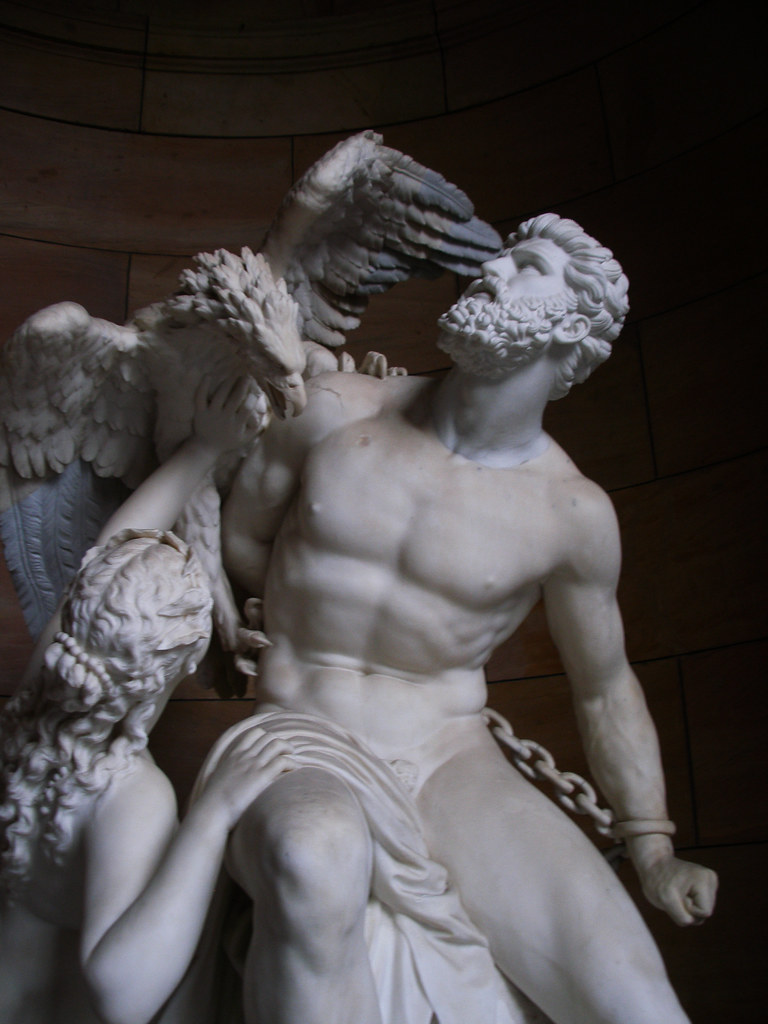
1. **Prometheus’s Ring: A Symbol of Chained Greatness**Our journey begins with a tale as old as time, straight from Ancient Greece, featuring the Titan Prometheus. After being freed by Heracles from his eternal punishment, Prometheus accepted a unique condition from Zeus. He had to wear an iron ring, set with a piece of the rock from the Caucasus, on his finger. This wasn’t just a fashion choice; it was a constant, stark reminder of the chains and the harsh rock where he had been bound for defying the gods.
This mythical ring carries a potent double symbolism that truly makes you think. Firstly, it represents Prometheus’s undeniable submission to Zeus, a permanent mark of his subjugation, even in freedom. It’s a powerful metaphor for the enduring consequences of challenging ultimate authority.
Secondly, and perhaps more profoundly, the ring evokes the idea that greatness and punishment can often be inextricably linked. Prometheus, a benefactor of humanity, suffered immensely for his gifts, and this ring was a physical manifestation of that paradox. The piece of stone embedded in it wasn’t just rock; it was a signature, a seal of his profound experience and his enduring connection to both suffering and extraordinary achievement.
It’s a powerful narrative, showing how even in myth, rings were immediately imbued with complex layers of meaning, far beyond simple decoration. This ancient story lays a foundational layer for understanding how rings could embody significant life events, profound lessons, and the indelible marks of destiny.
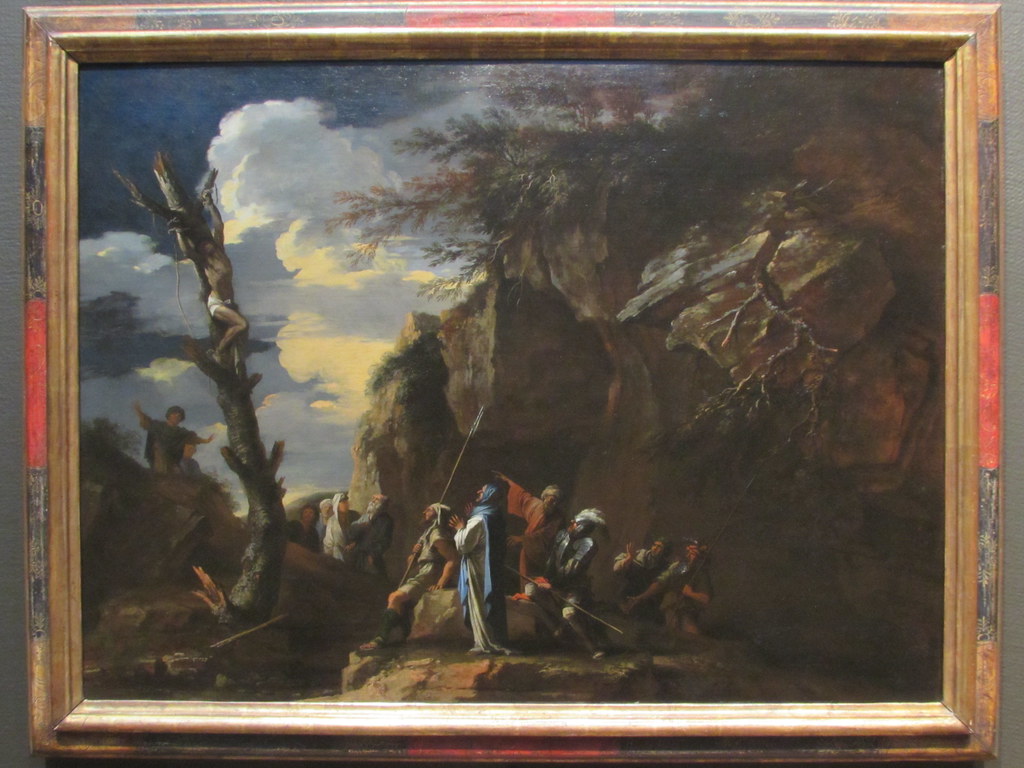
2. **Polycrates’s Ring: The Folly of Escaping Destiny**Another fascinating legend from Ancient Greece centers on Polycrates, a king so unbelievably fortunate that his luck seemed almost unnatural. Convinced that such boundless good fortune couldn’t last forever, Polycrates made a dramatic decision: he would voluntarily sacrifice his most precious object to Fortuna, the goddess of luck, hoping to appease fate and balance the scales.
Climbing a high tower, Polycrates threw a magnificent ring, adorned with a beautiful emerald, into the vast, indifferent sea. It was a grand gesture, a king attempting to outsmart destiny. But as fate would have it, the sea had other plans. Once in the water, the precious ring was swallowed by a fish, which, in a twist of unbelievable irony, was later caught by a fisherman. And you guessed it – the ring was returned to Polycrates.
This precious jewel, intended to ward off bad luck by locking it in a magic circle of sacrifice, was rejected by the very entity it was offered to. The sea refused to accept Polycrates’s offering, making his attempt to control his destiny utterly futile. Soon after this uncanny event, King Darius waged war against Polycrates. Despite his earlier luck, Polycrates was defeated and met a gruesome end, tied to a cross.
Thus, Polycrates’s ring powerfully symbolizes the inescapable nature of destiny. It highlights the humbling truth that sometimes, no matter how much we try to control or bargain with fate, the gods or cosmic forces will only accept what they are determined to take. It’s a gripping reminder that even the most powerful rulers can’t always escape their predetermined paths, and a ring can become the ultimate symbol of that profound realization.
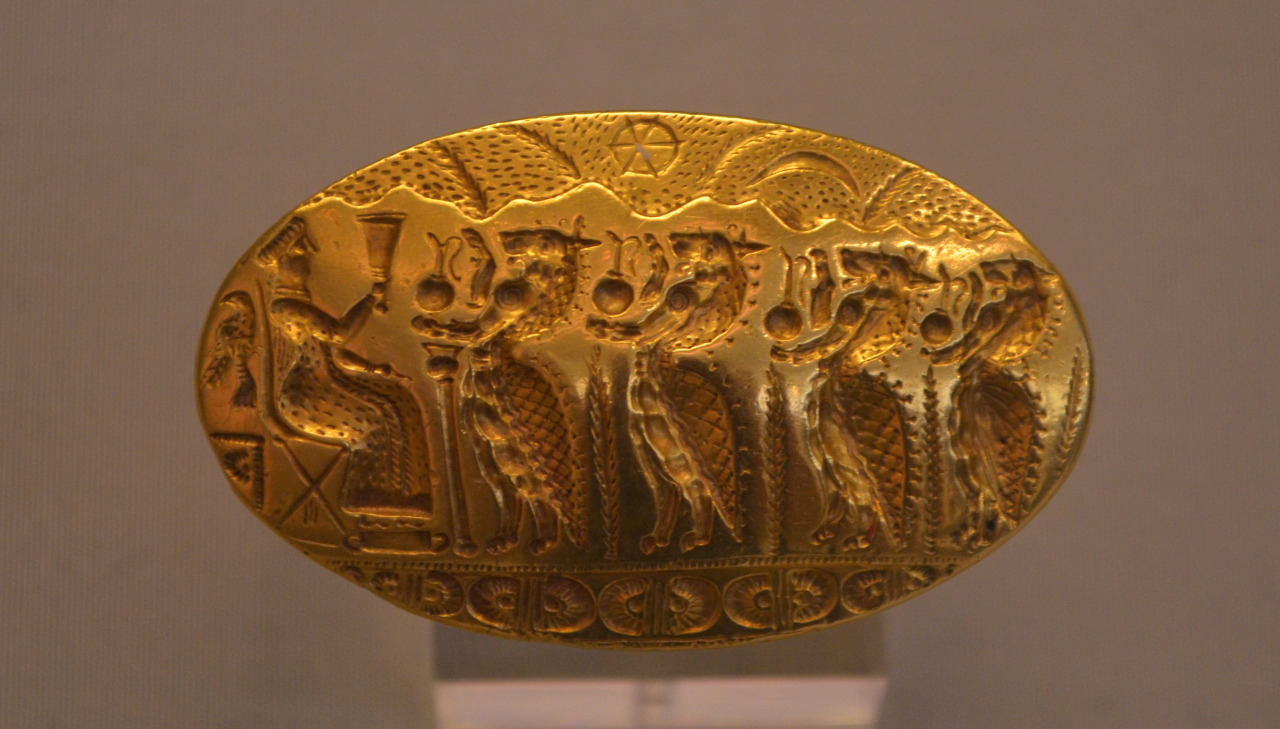
3. **Ancient Roman Signet Rings: Sealing Authority and Identity**Fast forward to the early days of the Roman Republic, where rings began their journey from mythical objects to practical tools of power and authentication. The very first rings forged by the Romans were primarily made from iron. These weren’t just simple bands; each iron ring featured an engraved seal, which served as the unique signature of the person who wore it. This was an innovation that fundamentally changed how important documents were handled.
These early signet rings were indispensable for official business. They were used to literally ‘sign’ or authenticate critical documents, imprinting a unique mark in wax to signify legitimacy and authority. In a society where literacy wasn’t universal and personal identification was paramount, a signet ring was an unmistakable badge of identity and trust, carrying the weight of the wearer’s word and standing.
Initially, the privilege to wear gold rings, known as the “jus annuli aurei,” was an exclusive right, meticulously regulated. It was granted only to senators, and even then, only when they were serving in the esteemed capacity of Republic ambassadors. This strict regulation underscored the high status and profound significance attached to wearing a gold ring, marking out the absolute elite of Roman society.
Over time, however, as Roman society evolved and its empire expanded, this rule gradually relaxed. Eventually, the right to wear gold rings was extended to all Roman citizens, a democratic shift that still maintained the ring’s status as a symbol of citizenship and belonging. Nonetheless, the signet ring’s original role in sealing deals and establishing identity remained foundational, influencing countless subsequent practices of authority and authentication throughout history.
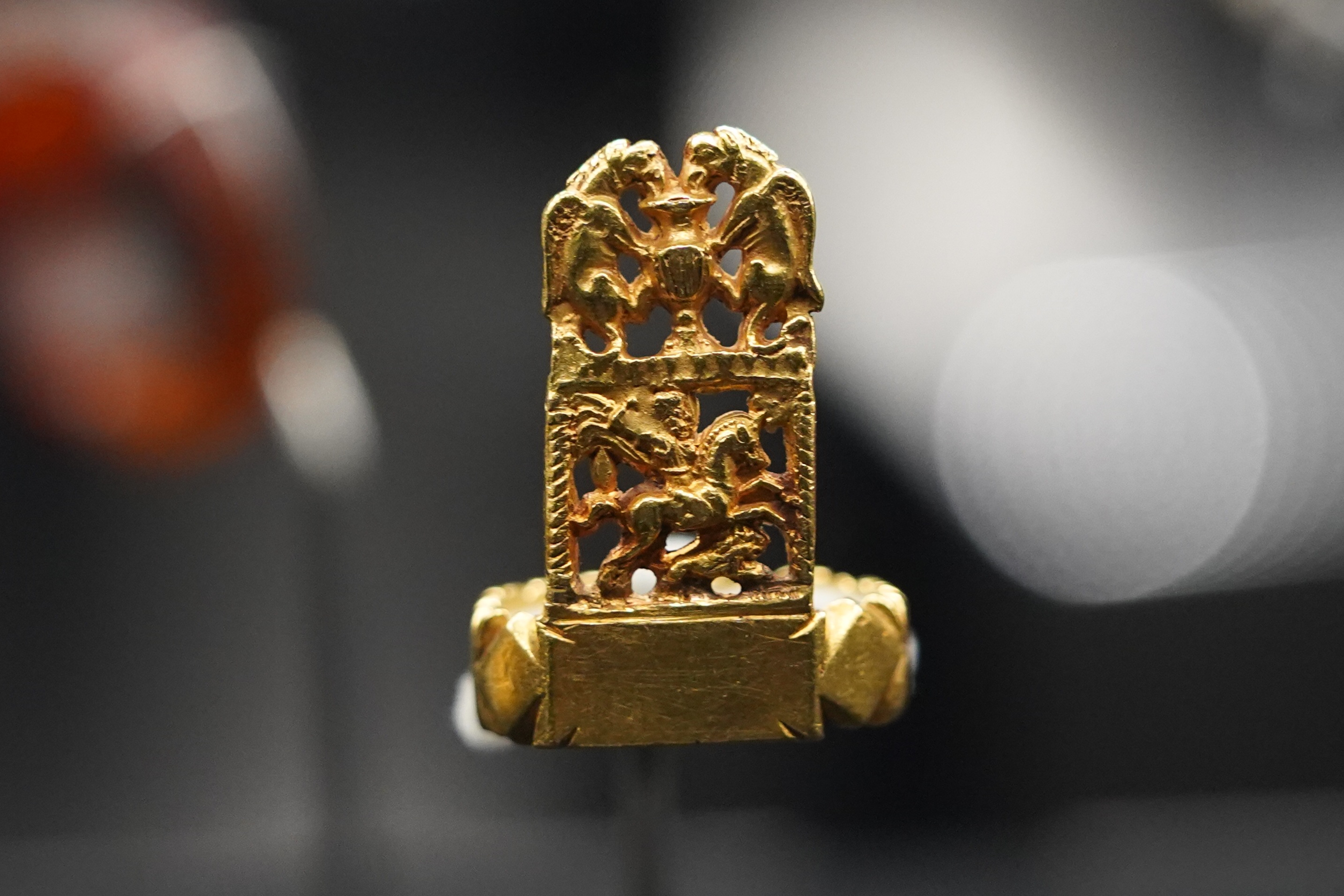
4. **Ancient Roman Gold Rings: Displaying Unrivaled Status**As the Roman Empire moved into its glorious period, the simplicity of iron rings gave way to an opulent display of wealth and power, especially for the elite. This was a time when men and women alike flaunted massive gold rings, often lavishly decorated with incredibly expensive precious stones. These weren’t just accessories; they were declarations, loud and clear, of one’s position in the social hierarchy.
These magnificent gold rings served as a primary means for the rich and powerful to openly display their privileged status. In a society keenly aware of social distinctions, the size, material, and embedded gemstones of a ring were unmistakable indicators of one’s wealth, influence, and access to luxury. It was a tangible, glittering representation of their place at the pinnacle of Roman society, setting them apart from the common citizen.
The evolution from the functional iron rings of the Republic to the extravagant gold rings of the Empire perfectly encapsulates the changing values and aspirations of Roman society. While the earlier rings prioritized authentication and authority, these later adornments leaned heavily into overt displays of material success and social dominance. The ring, in this era, became a fashion statement woven deeply into the fabric of status.
This shift solidified the ring’s role as a potent symbol of power and affluence. It showed how a piece of jewelry could be more than just personal adornment; it could be a dynamic marker of societal achievement, a tool for reinforcing class distinctions, and a dazzling testament to an individual’s standing within a vast and powerful empire. Truly, these rings sealed their wearers’ place in the upper echelons of a dominant civilization.
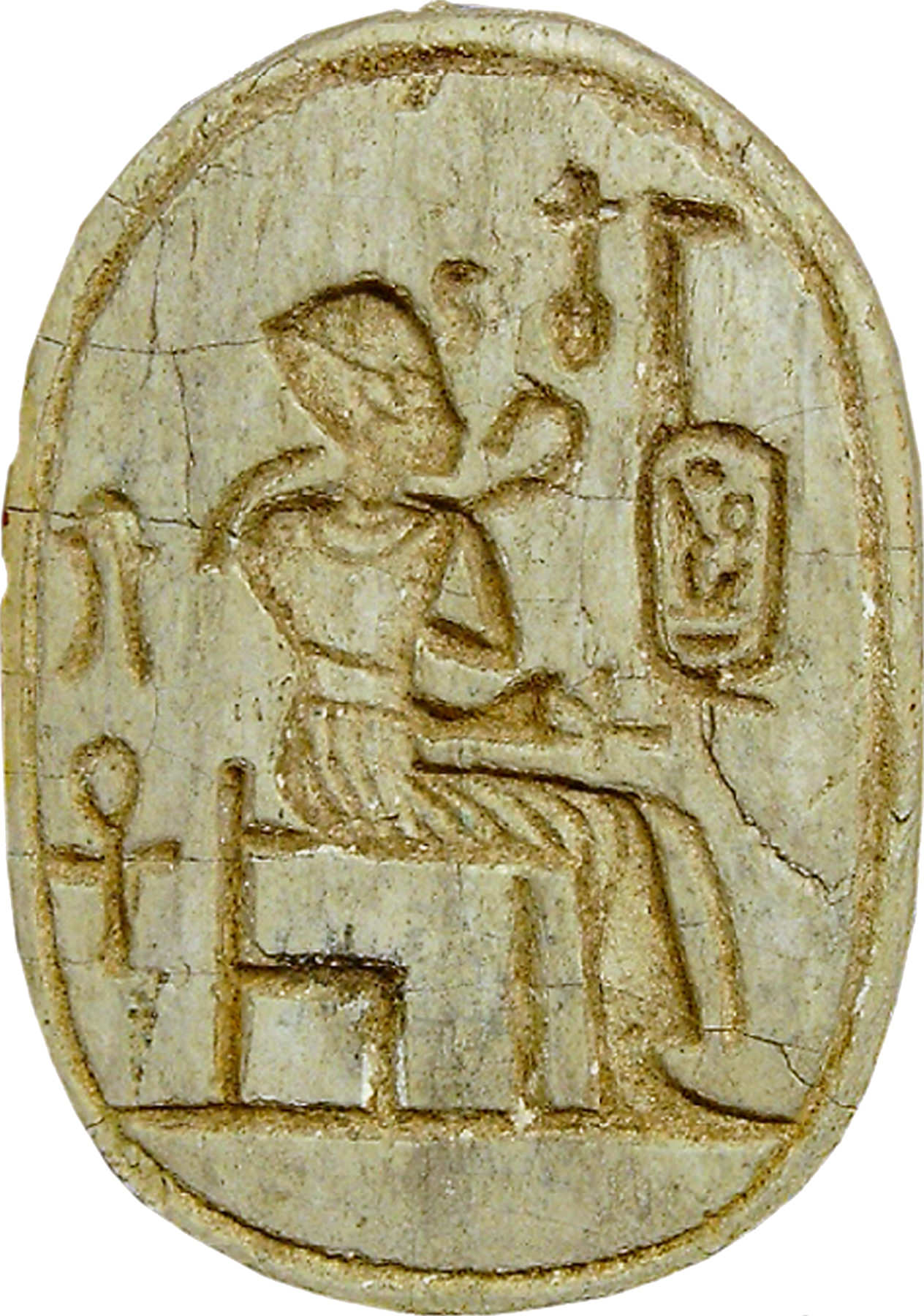
5. **Ancient Egyptian Scarab Rings: Emblems of Life and Rebirth**Across the Mediterranean, in the land of the pharaohs, rings held an exceptional and deeply spiritual importance, particularly those emblazoned with the iconic scarab motif. In Ancient Egypt, the scarab beetle was revered as a sacred creature, symbolizing life, rebirth, and the journey of the sun. Therefore, scarab rings were far more than just decorative items; they were imbued with profound religious and protective significance.
These fascinating scarab rings were meticulously carved from a variety of precious and semi-precious stones. Imagine the vibrant hues of lapis lazuli, the calming purples of amethyst, the bright blues of turquoise, or the clear sparkle of crystal – all shaped into the sacred beetle. Once carved, these rings were often exquisitely engraved with intricate decorative hieroglyphs, powerful protective symbols, or the noble titles of high society members, further enhancing their unique appeal.
With their rich symbolism, these elevated simple gold or silver rings into truly valuable jewelry pieces, transforming them into lucky charms or potent protective amulets. They weren’t just worn for their material value; they were believed to safeguard the wearer from harm, ensuring well-being in this life and safe passage into the afterlife. Scarab rings became essential personal emblems, deeply intertwined with the spiritual beliefs of the Egyptians.
Indeed, in ancient Egypt, rings weren’t just about earthly status; they were spiritual conduits. They were frequently buried with the dead, signaling the deceased’s importance not just in life, but also in their journey to the afterlife. This underscores how deeply the Egyptians connected rings to their fundamental beliefs about existence, death, and resurrection, making them an unparalleled symbol of spiritual power and continuity.
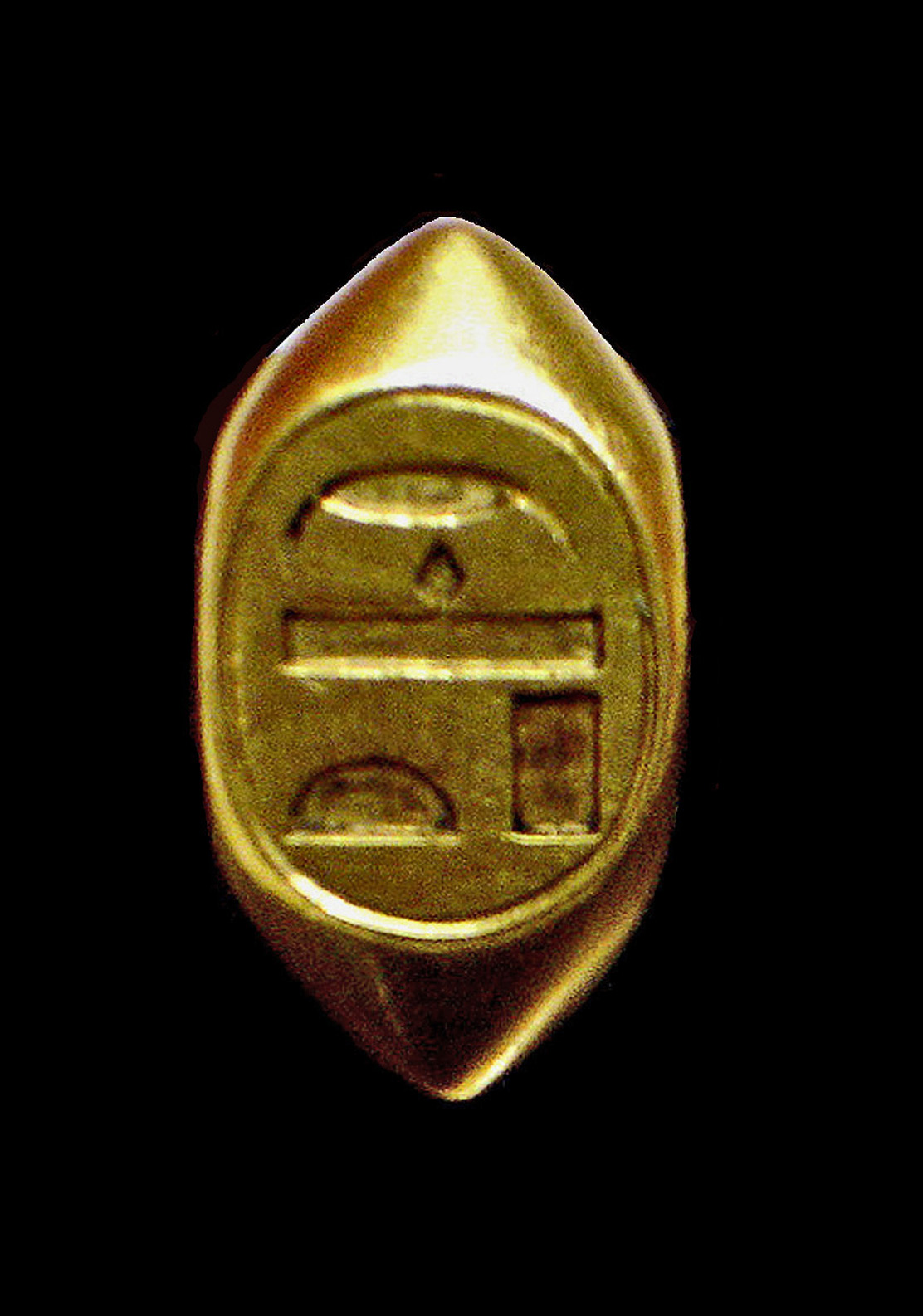
6. **Ancient Egyptian Royal Seal Rings: Confirming Dynastic Power**The sophisticated craftsmanship of Ancient Egypt reached new heights during the New Kingdom period, spanning from 1559 to 1085 BC. Egyptian jewelers developed incredibly advanced working techniques, allowing them to create even more complex and awe-inspiring objects. Among the most impressive and historically significant rings of this era were the royal seal rings, pieces that truly embodied dynastic power.
These royal seal rings served a dual, critical purpose. First, they were unmistakable symbols of rank and power, instantly identifying the wearer as a high-ranking member of the royal court or the reigning monarch themselves. Adorned with elaborate designs and precious materials, they were visual declarations of authority and divine right to rule, leaving no doubt about the wearer’s standing.
Second, and equally important, these rings functioned as practical means of authenticating official documents. Just like the Roman signet rings, the seals on these royal rings were pressed into clay or wax, validating decrees, treaties, and other vital state papers. This made them indispensable tools in the actual governance and administration of the vast Egyptian kingdom, literally sealing deals and cementing dynastic decisions.
Common motifs found on these royal seal rings included the revered scarab, along with other powerful religious symbols that underscored the monarch’s connection to the divine. Pharaohs and nobles wore these rings, not merely for adornment, but as tangible representations of their sacred authority and their role as intermediaries between the gods and the people. They were, quite literally, rings that held the kingdom together, showcasing the enduring legacy of royal power.
Ready to continue our deep dive into the shimmering world of royal rings? After exploring the ancient foundations where rings forged early power and symbolism, it’s time to fast-forward through medieval vows to the modern legacies these incredible bands have shaped. We’re talking about the rings that didn’t just adorn fingers but truly defined commitment, underscored dynastic influence, became central to formal ceremonies, asserted religious authority, and cemented enduring royal traditions. Get set to uncover the next six iconic pieces that tell an even richer story of majesty and meaning!
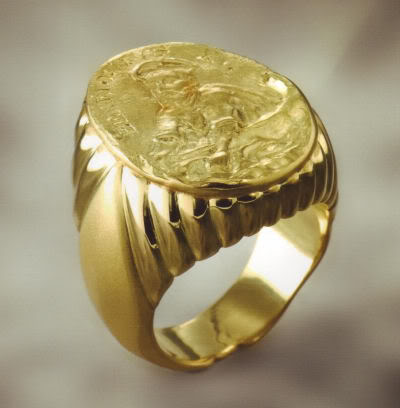
7. **The Fisherman’s Ring: A Pontifical Seal of Exclusive Power**When we talk about rings that symbolize immense religious authority, few can rival the Fisherman’s Ring. This isn’t just a piece of jewelry; it’s a pontifical seal, representing the exclusive bond and spiritual power of the Pope. Used for centuries, it’s been the ultimate symbol of the Holy See, marking out the leader of the Catholic Church as a figure of unparalleled spiritual and temporal influence.
This isn’t a ceremonial prop that just sits in a display case; it’s an active tool of governance and authentication within the Vatican. Just imagine the weight of tradition and authority held in that single signet, pressed into wax to authenticate official documents and decrees. Its use centuries ago, and even today, underscores the critical role rings have played in validating the highest levels of religious and, historically, political power.
What makes the Fisherman’s Ring even more profoundly symbolic is the unique tradition surrounding its demise. Upon the death of a Pope, this revered ring is ceremonially destroyed. This isn’t out of disrespect, but as a crucial preventative measure to avoid forgery, and more significantly, to symbolically mark the absolute end of the Pope’s reign and authority. It’s a powerful act that reinforces the individuality and finality of each pontificate.
Truly, this ring transcends mere adornment, functioning as a tangible link to centuries of religious leadership. It stands as a powerful testament to how rings can embody not just personal status but also institutional authority, serving as a beacon of both religious doctrine and the practical exercise of its power through history.
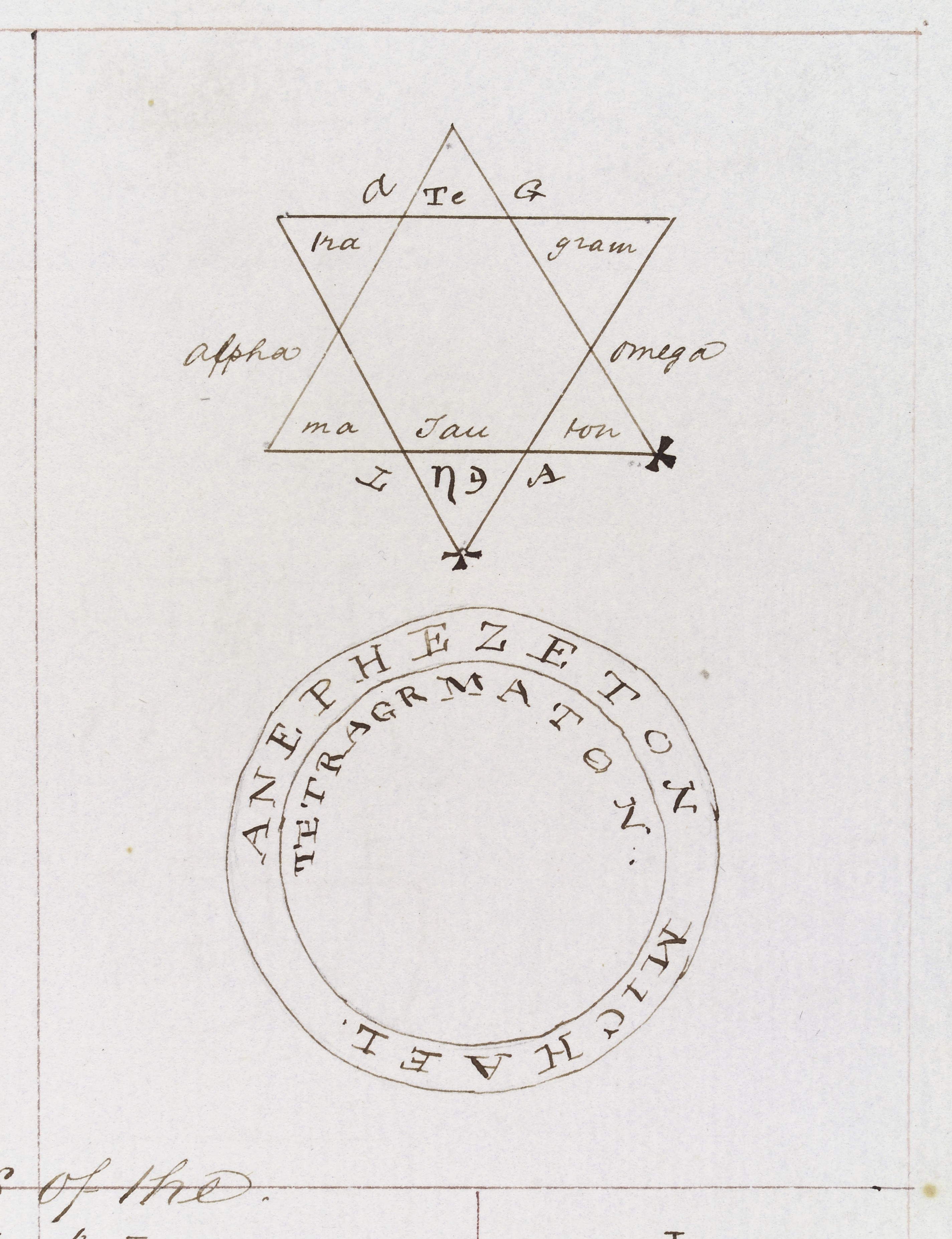
8. **King Solomon’s Ring: Legend of Wisdom and Dominion**Prepare for a journey into legend with one of the most famous and intriguing rings in folklore: King Solomon’s Ring. It’s said this wasn’t just any ring; it bestowed upon the legendary monarch profound knowledge, making him a figure of unparalleled wisdom. This mythical band elevated him beyond human understanding, granting insights and abilities that set him apart from all other rulers.
According to ancient Arab folklore, the power of this ring was truly extraordinary. King Solomon reportedly used the seal on his ring to mark the very demons he had gathered for his magic, effectively making them his slaves. Can you imagine wielding such control? This demonstrates the ring’s immense symbolic power, not just over people, but over supernatural forces, making it a literal tool of dominion and influence over other beings.
The legend deepens with the dramatic tale of its loss. When King Solomon tragically lost his ring in the Jordan River, he believed his entire kingdom would collapse and be overrun by enemies without it. Some esoteric authors even suggest a jealous genie stole it, only for God to intervene, forcing the genie to throw it into the sea, allowing Solomon to recover his precious possession with the help of a fisherman. This narrative highlights the ring’s integral connection to his power and the stability of his realm.
Ultimately, King Solomon’s ring symbolism is fascinating. It represented his profound knowledge, his absolute power over other beings, and was seen as a ‘seal of fire,’ a divine gift from the heavens. This ring was the tangible sign of his spiritual and material dominion, proving that sometimes, the greatest power isn’t in a crown, but in a circle of metal and magic on one’s finger.

9. **Engagement Rings: From Iron Vows to Golden Promises**Shifting our focus to matters of the heart and enduring commitment, engagement rings boast a rich cultural history that continues to be essential in modern times. From ancient rituals to contemporary proposals, the ring has consistently served as a profound symbol of love and respect, intertwining with our daily lives in deeply personal ways. Early engagements, like those in Ancient Ireland, saw men offering bracelets woven from human hair, and their acceptance signified a solemn bond preceding marriage.
During the Middle Ages, the engagement ceremony itself was often considered even more significant than the wedding. Initially, these rings were quite humble, fashioned from materials like bronze, wood, or even clay. The man’s ability to offer a ring, regardless of material, was a testament to his financial capacity and commitment to care for his future wife. However, the significance of the material evolved dramatically. In the 9th century, Pope Nicholas I mandated that engagement rings be exclusively made of gold, elevating their status. Yet, in a more inclusive turn in 1215, Pope Innocent III broadened the allowance to include any metal, such as iron and silver, reflecting a more accessible symbolism.
The symbolism of the engagement ring during this period was complex. An iron ring, presented to the bride’s family, was a clear representation of the fiancé’s financial ability and his unwavering commitment. It carried an expectation for the bride to submit and remain loyal. Later, it became customary for grooms to give two rings: one of gold for public festivities, and another of iron, intended for daily wear at home, clearly delineating roles and occasions. In the Christian tradition, the ring embodies a faithful, freely accepted connection, its circular form linking it to eternity and the cosmos, transcending its physical appearance.
Our journey through engagement rings culminates with the grand entry of diamonds. The first documented diamond engagement ring was famously given in 1477 by Archduke Maximilian of Austria to Mary of Burgundy. This pivotal moment not only popularized diamonds but also solidified their status as the ultimate symbol of unwavering commitment, a tradition deeply etched into the fabric of modern romantic gestures. The unbroken circle, whether of humble iron or glittering gold and diamond, continues to represent an infinite, eternal love, symbolizing the unbreakable bond that marriage creates.

10. **Symbolic Gemstones in Royal Rings: A Spectrum of Power and Virtue**Beyond their intrinsic material value, gemstones in royal rings hold immense significance, adding not just splendor and color, but also profound layers of meaning. Historically, these dazzling stones were believed to possess mystical properties and were deeply associated with divine favor, making them much more than mere adornments. They were conduits of power, protection, and prophecy, chosen meticulously for their perceived magical and symbolic attributes.
Diamonds, with their unparalleled brilliance and exceptional durability, have naturally been long favored by royalty, symbolizing strength, purity, and eternity. But the regal spectrum extends further. Sapphires, those captivating blue gems, are emblematic of loyalty, wisdom, and nobility – qualities utterly essential for any monarch. Their association with royalty is so strong that the British royal family’s engagement ring famously features a stunning blue sapphire, a tradition now famously carried by Kate Middleton, the Princess of Wales.
Rubies, blazing with fiery passion, symbolize courage, prosperity, and vitality. These vibrant stones have frequently adorned the crowns and rings of monarchs, serving as a powerful visual declaration of their power and dynamic spirit. We even see this exemplified in Queen Elizabeth II’s coronation ring, which featured a sapphire surrounded by rubies, a combination of loyalty and courage epitomized in a single, magnificent piece of regalia.
Emeralds, with their lush green hues, are associated with fertility, rebirth, and abundance, gracing royal jewels as symbols of hope and renewal. Together, these precious gemstones do more than just sparkle; they tell stories. They encode the values, aspirations, and divine connections of the royal wearers, making each ring a miniature tapestry of dynastic heritage, profound belief, and the enduring power of symbolism. They are, quite literally, virtues solidified in stone, passed down through generations.
.jpg/440px-Austria-03356_-_Austrian_Imperial_Crown_(32121434203).jpg)
11. **Crown-Shaped Rings and Heraldic Emblems: Badges of Lineage and Status**Royal rings distinguish themselves not only through their precious materials but also through distinctive shapes and designs that are rich with symbolic significance. These weren’t just random aesthetic choices; they were carefully crafted declarations of identity, status, and lineage. Imagine wearing a miniature badge of your family’s history right on your finger!
Crown-shaped rings, for instance, were a straightforward yet potent way to represent royal status. Adorned with tiny, intricately detailed crowns, these rings were worn by monarchs and high-ranking members of the nobility, leaving no doubt about their position at the pinnacle of society. It’s a direct visual affirmation of their divine right and inherited authority, a crown within reach, even on a finger.
Beyond the literal crown, popular designs included the elegant fleur-de-lis, heraldic emblems, and meticulously engraved family crests. Each of these motifs served as a unique representation of the royal wearer’s heritage and lineage. Think of them as ancient, highly personalized logos, communicating complex family histories and powerful affiliations in a single, striking image. These symbols were integral to how royal families conveyed their unique identity and solidified their place in history.
Even in contemporary times, this tradition of using specific emblems persists, albeit with a modern sensibility. Signet rings, while less about sealing documents now, remain a popular way for those of noble or royal lineage to honor their family heritage and personal identity. A prime example is the Prince of Wales, who traditionally wears a gold signet ring engraved with the Prince of Wales crest, showcasing the enduring relevance of these powerful, symbolic designs in maintaining royal traditions and connecting to a storied past.
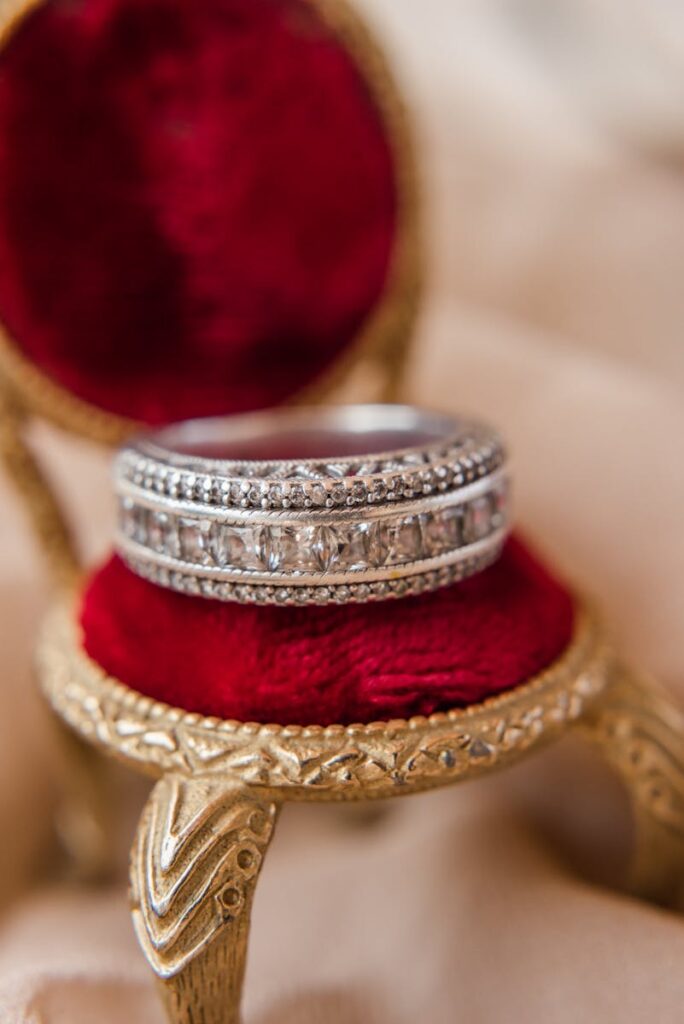
12. **Modern Royal Rings: A Blend of Tradition, Legacy, and Contemporary Flair**In our rapidly evolving world, royal rings continue to hold an incredibly special place within the realm of royalty. They’re not just static relics of the past; they are dynamic expressions, continually adapting to new eras while honoring centuries of tradition. These rings manifest as cherished heirlooms, carefully passed down through generations, each telling a silent story of love, power, and continuity. Yet, they are also newly crafted to commemorate significant milestones and events, proving their enduring relevance in modern monarchies.
What makes modern royal rings so captivating is their innovative ability to combine deeply traditional design elements with a touch of contemporary flair. This delicate balance reflects the evolving tastes and styles of the monarchy, demonstrating that even ancient institutions can embrace modernity without sacrificing their profound heritage. It’s a testament to how these rings remain magnificent pieces of jewelry while powerfully communicating heritage, authority, and opulence.
These regal adornments continue to encapsulate a rich history, unique shapes, and profound meanings, often embellished with the same precious gemstones that have held cultural and symbolic significance for millennia. From the glint of a sapphire representing loyalty to the sparkle of a diamond for eternity, the stones chosen today still echo the virtues and values of the past, connecting contemporary royals to their ancestral roots.
Through the centuries, royal rings have never ceased to captivate the imagination, serving as dazzling showcases of the splendor and grandeur of royal families across the globe. Whether they are priceless heirlooms, linking current generations to legendary figures, or newly conceived creations marking a fresh chapter, royal rings remain cherished as a testament to the enduring legacy of royalty and the timeless, irresistible allure of these truly remarkable treasures. They are, in essence, history personified, worn on the finger.
What a journey! From mythical origins that shaped destinies to modern symbols of commitment and dynastic power, royal rings have proven to be far more than just adornments. They are the silent, glittering witnesses to human history, weaving tales of love, authority, wisdom, and eternal legacy. Each ring, whether a relic from ancient Egypt or a gleaming piece on a modern royal hand, encapsulates an entire universe of meaning within its delicate circle. They remind us that even the smallest objects can carry the weight of empires and the whispers of ages, forever connecting us to the grandeur and enduring mystique of royalty.



